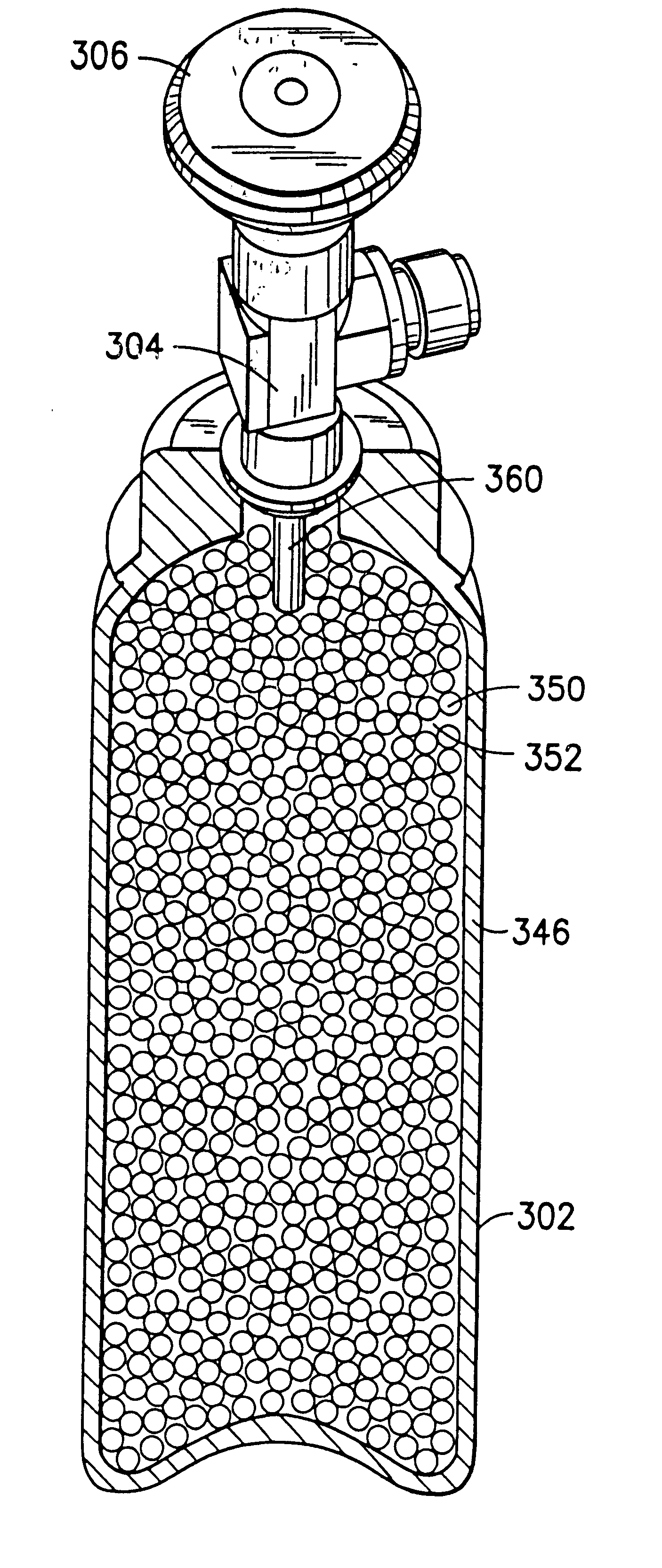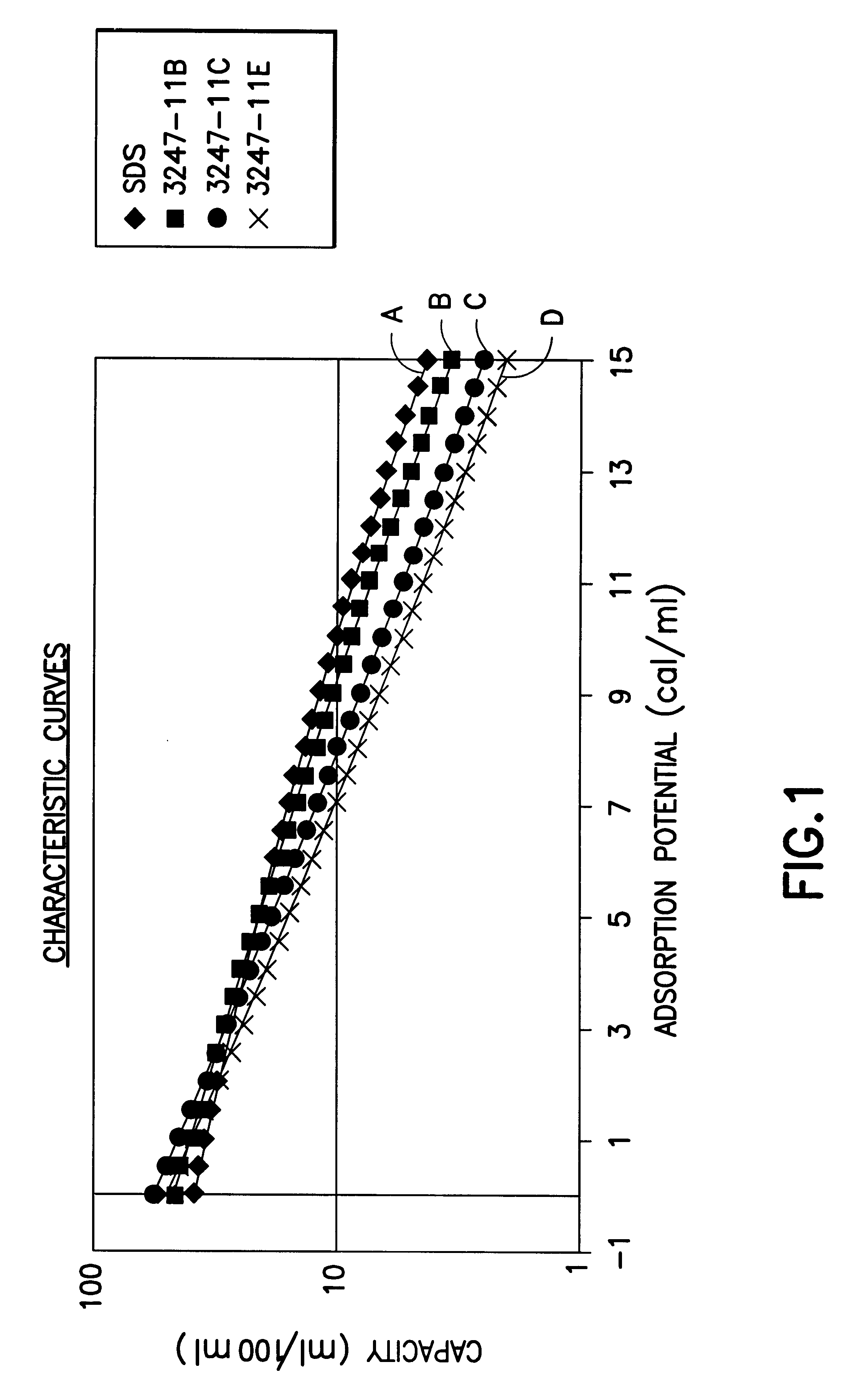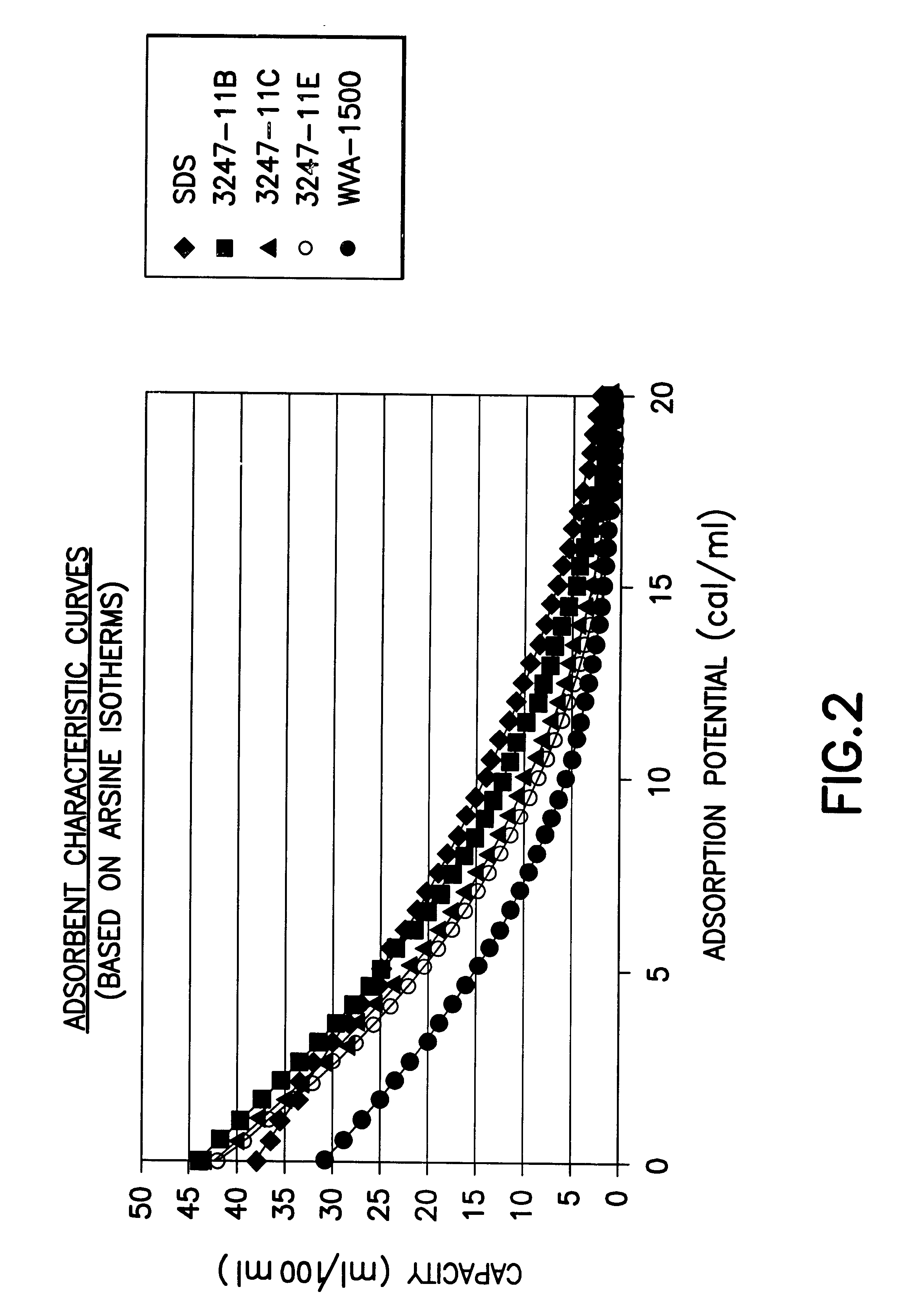Fluid storage and delivery system utilizing low heels carbon sorbent medium
a technology of carbon sorbent medium and liquid storage, which is applied in the direction of packaging goods, other chemical processes, separation processes, etc., can solve the problems of explosive hazard in the process system, significant lag time in the dispensing operation, and difficulty in dispensing of interiorly disposed heating coils or other heating elements in the zeolite bed itsel
- Summary
- Abstract
- Description
- Claims
- Application Information
AI Technical Summary
Benefits of technology
Problems solved by technology
Method used
Image
Examples
Embodiment Construction
The disclosure of U.S. Pat. No. 5,518,528 issued May 21, 1996 is hereby incorporated herein by reference in its entirety.
The present invention provides a low-pressure adsorption-desorption apparatus as a source fluid supply means, e.g., for applications such as ion implantation of hydride and halide gases, and organometallic Group V compounds. Illustrative examples of the foregoing include arsine, phosphine, silicon tetrafluoride, arsenic pentafluoride, germanium tetrafluoride, trimethyl silane, chlorine, diborane (B.sub.2 H.sub.6 and its deuterium analog), nitrogen trifluoride, boron trifluoride, boron trichloride, hydrochloride, hydrobromide, hydrofluoride, hydroiodide, and tungsten hexafluoride.
As used herein, the term "low pressure" means a pressure not substantially exceeding 1 atmosphere, e.g., a pressure .ltoreq.1.25 atmosphere, more preferably a pressure .ltoreq.1.0 atmosphere, and most preferably a pressure within the range of from about 0.15 to about 0.8 atmosphere.
It will...
PUM
| Property | Measurement | Unit |
|---|---|---|
| apparent density | aaaaa | aaaaa |
| temperature | aaaaa | aaaaa |
| pore size | aaaaa | aaaaa |
Abstract
Description
Claims
Application Information
 Login to View More
Login to View More - R&D
- Intellectual Property
- Life Sciences
- Materials
- Tech Scout
- Unparalleled Data Quality
- Higher Quality Content
- 60% Fewer Hallucinations
Browse by: Latest US Patents, China's latest patents, Technical Efficacy Thesaurus, Application Domain, Technology Topic, Popular Technical Reports.
© 2025 PatSnap. All rights reserved.Legal|Privacy policy|Modern Slavery Act Transparency Statement|Sitemap|About US| Contact US: help@patsnap.com



